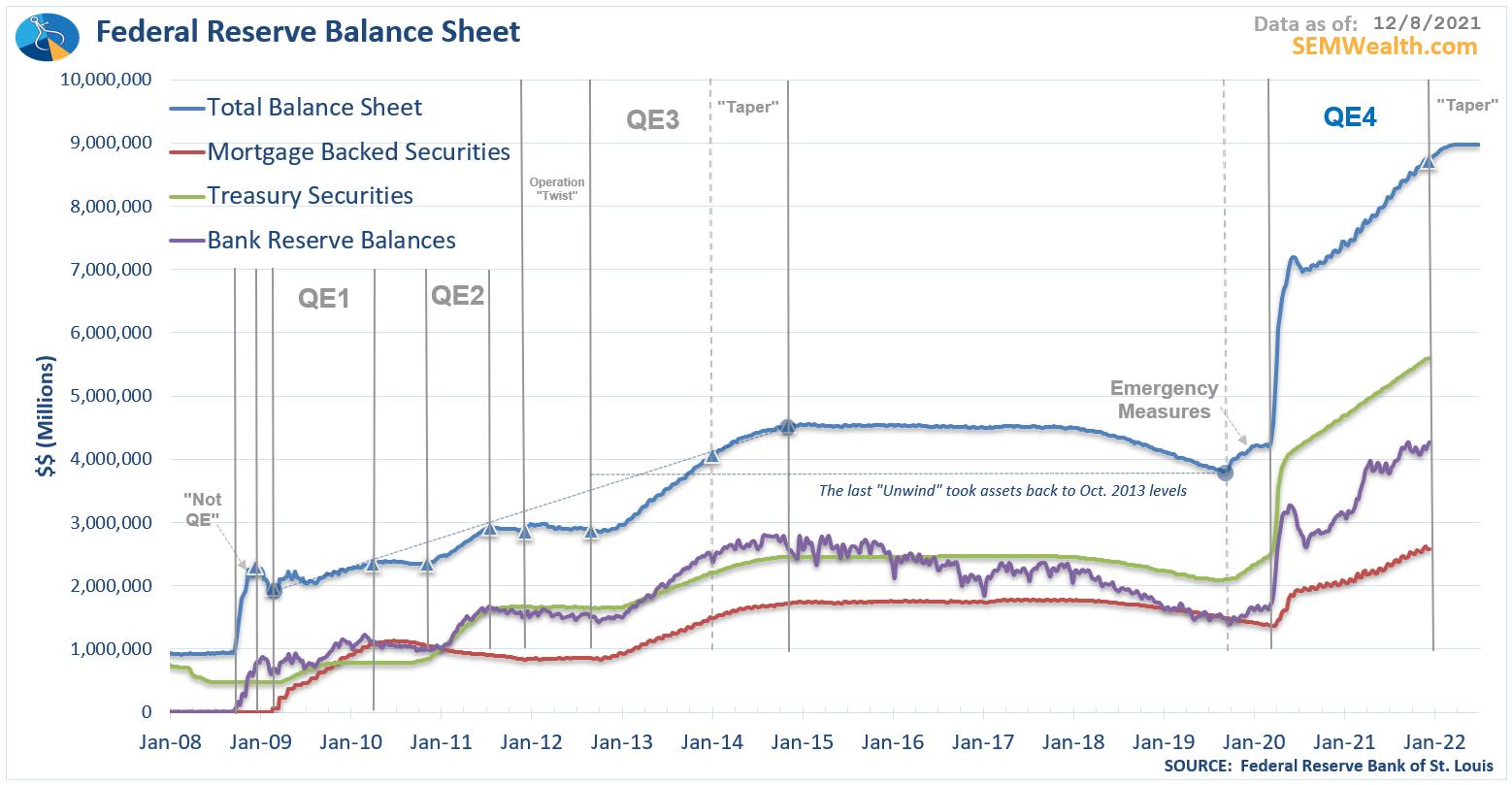The Federal Reserve announced on Wednesday they were accelerating the pace of the tapering of their Quantitative Easing program. While markets were on edge after some shaky press conferences in prior months, this was already telegraphed in Congressional testimony at the end of November. Back then the markets initially panicked, but they have since recovered.
There was concern going into the meeting Chairman Jerome Powell would come out much more "hawkish" (aggressive in his inflation fighting language). Instead, Chair Powell spun the decision in a positive light, sticking to his opinion that the high levels of inflation will dissipate as the supply chain problems work through the system while at the same time saying higher interest rates and less Fed stimulus may actually help the economy. Inflation can slow consumer demand, so if the Fed's policies reduce inflation enough to create more demand that could be a good thing.
In the big scheme of things nobody really knows how much influence the Fed has had on the economy or the markets. They've used unprecedented moves to fight the pandemic. These moves dwarfed the previously unprecedented moves to fight the Financial Crisis. The Fed didn't come close to unwinding those past stimulus measures before the next crisis hit. In the whole scheme of things, I would label the news from the Fed this week as "much ado about nothing". Here's a look at the Fed's Balance Sheet. I've added the new pace of Quantitative Easing (asset purchases) to the chart. The Fed will still be adding money to the system through at least March, just at a slower pace.

This doesn't really change anything in the big picture. We still are likely to be "fighting the Fed" in 2022 as they begin to raise interest rates and somebody other than the Federal Reserve will have to support the runaway spending by our government. The 2022 market will be much less friendly to investors than we've enjoyed in 2021 as mentioned in this week's musings:






